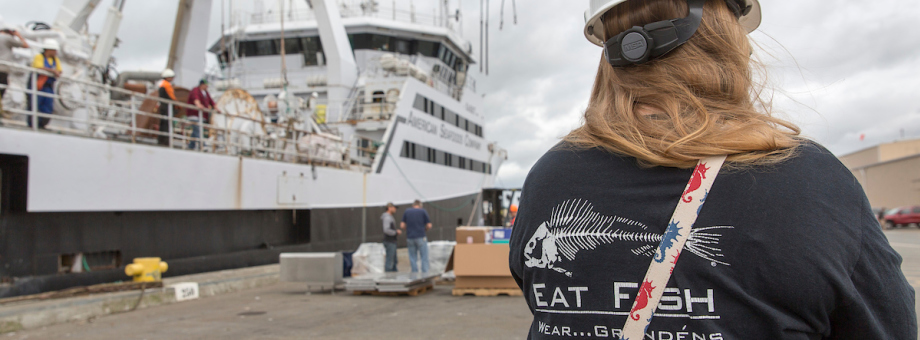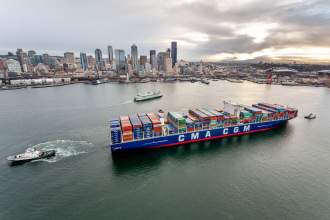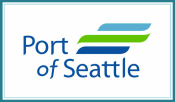
Our Maritime Matters
Today, our maritime industry has never been stronger – or more important to our region. Around here, maritime matters.
Washington State’s Maritime industry is rooted in the State’s rich history of timber production, its location as a trade hub, and its proximity to some of the world’s most productive fisheries. And we’ve always been the primary gateway to Alaska and Asia.
Our maritime industry is annually worth $45.0 billion to the state economy, according to a 2022 study by the Washington Maritime Federation. In 2022, the industry employed 174,300 workers, with an average salary of $112,000 with benefits!
Washington is also the most trade dependent state in the United States. Today, four in ten jobs in Washington are tied to international trade, according to the Port of Seattle.
And the maritime industry is thriving!
The growth of the industry is not just in shipping. You can see the strength of the industry at our shipyards, cruise ship terminals, Fishermen’s Terminal, Shilshole Bay Marina, ferry terminals and maritime businesses throughout Washington.
Maritime Milestones
1850
SS Beaver, first steamship in the Pacific Northwest is commissioned by Hudson’s Bay Company
1873
Northern Pacific Railroad chooses Tacoma as western terminus of transcontinental line.
1889
Thea Foss founds Foss Launch Co., later to become Foss
Maritime, the largest tug company
on the West Coast. Tugboat Annie character based on Ms. Foss.
1891
Puget Sound Naval Shipyard established.
1897
Steamship Portland arrives with a "ton of gold,"starting the first Seattle boom as miners by the thousands began their northward journeys.
1911
Washington State Legislature enacts a law allowing the establishment of a port district and King County voters to approve creation of the Port of Seattle on September 5th.
1914
The Port of Seattle’s Fishermen’s Terminal is dedicated the North Pacific Fishing Fleet makes it their home port.
1916
Todd Shipyards purchased Seattle Construction and Drydock, expanding to Harbor Island in 1917.
1919
NYK Steamship Line offers regular sailings between Japan and Seattle.
World War I
Plants, such as Todd Shipyards and Skinner & Eddy Corporation, are busy with wartime contracts for the Emergency Fleet Corporation. 30,000 men find work at eight shipyards over the next few years.
1921
The Port of Seattle innovates with cold storage facilities never before seen. The Spokane St. Terminal is used for freezing, handling and storing fresh-caught fish from Alaska as well as keeping Washington apples, pears, berries, eggs, butter, and cheese refrigerated until they are exported or sent to local markets.
1923
Lumber is the top export; the annual cut is over five billion feet. Half of Washington State residents are employed in lumber or allied trades.
1927
Trade to the Orient now accounts for 50 percent of the Port’s foreign commerce.
1934
Lake Washington Ship Canal completed.
World War II
Todd Shipyards gears up for World War II, ultimately employing nearly 57,000 nation-wide, building 1,000 ships and repairing or converting another 23,000.
1949
Port of Seattle is granted authorization for Foreign Trade Zone No. 5 (FTZ), one of the oldest in the nation.
1951
With the buyout of Puget Sound Navigation., Washington State Ferries come into existence. Today, it’s the largest passenger and automobile ferry fleet in the United States. Its 23 ferry vessels carry more than 23 million ferry passengers and 10 million vehicles annually.
1962
The Port of Seattle’s Shilshole Bay Marina is formally
dedicated, marking the opening of
the area’s finest recreational moorage facility with room for 1500 vessels.
1964
First Sea-Land container ship arrives, marking the
beginning of the container shipping at the
Port of Seattle.
1970
Grain exports get a new home with the opening of the $15 million Pier 86 Grain Facility.
1976
Magnuson-Stevens Act establishes 200-mile fishery
conservation zone off the U.S. Coast,
consolidating control over territorial waters and
managing fisheries.
1984
An all-time high of one million containers moves through the Port of Seattle.
1999
The cruise terminal at Bell Street Pier welcomes its first cruise ship.
2009
A New Cruise Terminal: Smith Cove Cruise Terminal at Terminal 91 opens.
2011
Vigor Industrial purchased Todd Shipyards.
2012
Washington State Ferries announce conversion to natural gas.
2014
The Ports of Seattle and Tacoma announce Northwest Seaport Alliance.
2017
Centennial of the Ballard Locks.
Sources:
Workforce Development Council of Seattle-King County,
Community Attributes (2013), and
Port of Seattle. For more information: http://www.portseattle100.org/map-and-timeline/



